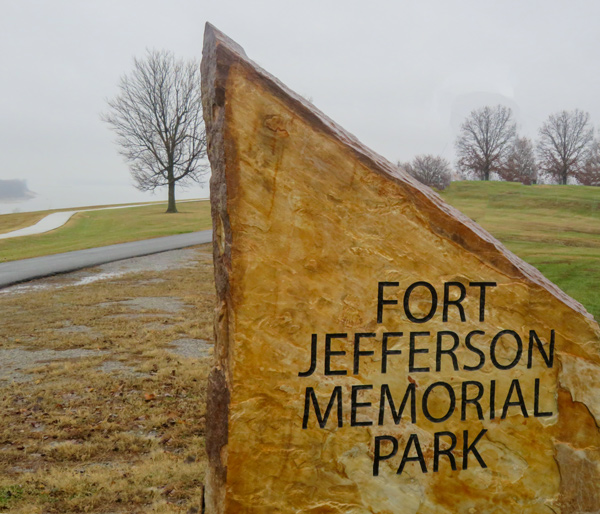Mouth of the Ohio, IL The captains and eight men cross the Ohio to visit Fort Jefferson, established by William’s older brother, George Rogers Clark. Near Natchez, the Governor of the Mississippi Territory notices that Spanish officers are reluctant to cede Louisiana to France.
Fort Jefferson Memorial Park
© 2022 by Robert Heacock. Used by permission. Some background elements have been digitally altered.
Fort Jefferson
Set out early this morning with a canoe and eight men in company with Capt. Clark to visit and view the ground on which Oald Fort Jefferson stood;
found six Shawano [Shawnee] hunting camps;
fort Jefferson stands on a rising ground, North of a Byo & West of the creek—
—Meriwether Lewis
I was at old fort Jefferson, it is entirly grown up with Trees—
—William Clark[1]James J. Holmberg, ed. Dear Brother: Letters of William Clark to Jonathan Clark (New Haven: Yale University Press, 2002), 60.
Fort Jefferson, named for Thomas Jefferson, was established by William Clark’s older brother, George Rogers Clark, in 1780. Due to illnesses that prevailed in the area, lack of settlers, and the need for troops in other places, it was abandoned sometime around 1781.[2]William Hayden English, Conquest of the Country Northwest of the River Ohio 1778–1783 and the Life of George Rogers Clark. Vol. 2. (Indianapolis: Bowen-Merrill Company, 1897), 673, 694.
Drunken Soldiers
found a number of our men who had left camp contrary to instructions & drunk, had much dificulty in geten
—Meriwether Lewis
Unwilling Spanish
Near Natchez Novr. 18h. 1803.
4 O’Clock in the Morning.Sir,
an unwillingness exists on the part of the Spanish Officers, to surrender the Province, and that there are some grounds to fear that expedients would be practised to produce Delay; yet on the 10h. of the present month, no preparations had been made on the part of the Spanish Government to resist our taking possession.
William C. C. Claiborne[3]“Claiborne to James Madison, 18 November 1803,” Founders Online, National Archives, https://founders.archives.gov/documents/Madison/02-06-02-0067. [Original source: The Papers of James … Continue reading
Notes
| ↑1 | James J. Holmberg, ed. Dear Brother: Letters of William Clark to Jonathan Clark (New Haven: Yale University Press, 2002), 60. |
|---|---|
| ↑2 | William Hayden English, Conquest of the Country Northwest of the River Ohio 1778–1783 and the Life of George Rogers Clark. Vol. 2. (Indianapolis: Bowen-Merrill Company, 1897), 673, 694. |
| ↑3 | “Claiborne to James Madison, 18 November 1803,” Founders Online, National Archives, https://founders.archives.gov/documents/Madison/02-06-02-0067. [Original source: The Papers of James Madison, Secretary of State Series, vol. 6, 1 November 1803–31 March 1804, ed. Mary A. Hackett, J. C. A. Stagg, Ellen J. Barber, Anne Mandeville Colony, and Angela Kreider. Charlottesville: University of Virginia Press, 2002, pp. 65–68.] |

